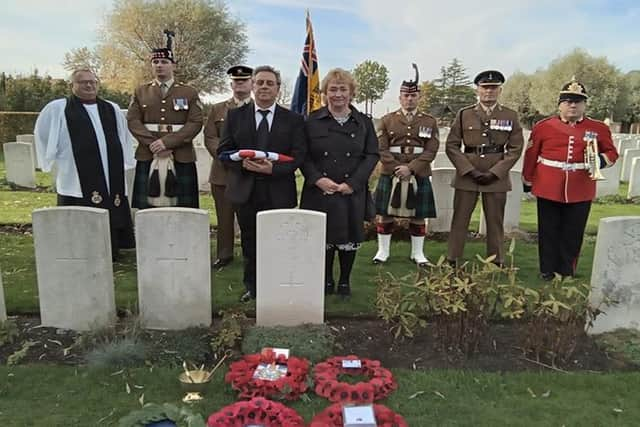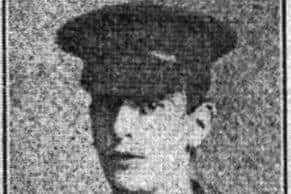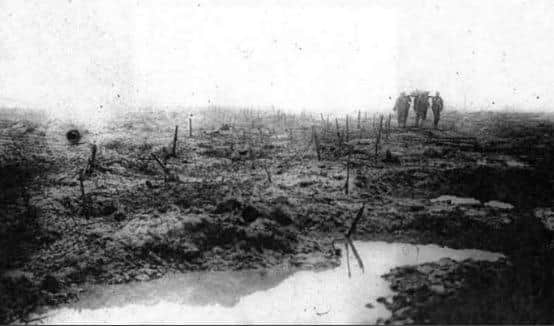Remains of two Wigan borough World War One soldiers identified after more than a century
and live on Freeview channel 276
Surviving relatives of Harry Atherton and Thomas Parry gave up hope of ever finding the young soldiers’ remains generations since.
But, as the world marks Armistice Day and Remembrance Sunday, painstaking research has led to the formal identification of both young men, the first of whose bodies was found buried in a French field, the other who had an unmarked grave in Belgium.
Advertisement
Hide AdAdvertisement
Hide AdIt was Canadian Armed Forces (CAF) who came across 23-year-old Harry’s remains during munitions clearing in the French village of Vendin-le-Vieil.
He had been born in 1893 in Leigh, the son of James and Sarah Atherton, grew up in Tyldesley and moved to Canada, alone, in 1913 where he settled in British Columbia and worked as a carpenter.
On March 31 1916, Pte Atherton enlisted in the Canadian Expeditionary Force (CEF) with the 63rd Canadian Infantry Battalion in Edmonton, Alberta.
He arrived in France in July after a transfer to the 10th Canadian Infantry Battalion, and fought several battles before being wounded.


Advertisement
Hide AdAdvertisement
Hide AdHarry was sent home to England to recover but returned to the front in March 1917.
On August 15 1917, he fought with the battalion during the first day of the Battle of Hill 70 in which claimed 429 casualties, 71 with no known graves. Harry was declared to have been killed in action that day.
His name was engraved on the Canadian National Vimy Memorial commemorating Canadian soldiers killed during the Great War with no known grave.
However in 2017, skeletal remains were discovered near Vendin-le-Vieil alongside 10th Battalion insignia and illegible ID disc. The disc was sent to the Canadian Conservation Institute where, after the cleaning process, “10 BATT” was clearly visible. The numbers “4 - - 658” showed a service number and on the upper right border of the disc, “ON” was visible – all of which helped with identification.


Advertisement
Hide AdAdvertisement
Hide AdThrough historical and DNA analysis, the Casualty Identification Review Board was able to confirm Harry’s identity.
The CAF has notified descendants and is providing them with support. He will be buried at the earliest opportunity in the Commonwealth War Graves Commission’s Loos British Cemetery, Loos-en-Gohelle, France.
Pte Parry from Tyldesley, was in the King’s Own Scottish Borderers regiment and was just 19 when killed in the Belgian trenches.
His body was buried near Ypres in a Commonwealth War Graves cemetery but his headstone bore no name until DNA research identified him.


Advertisement
Hide AdAdvertisement
Hide AdA re-dedication ceremony has been held, a fresh inscription proudly including Pte Parry’s name have being carved on the headstone.
His great-nephew Stephen Gore was among those attending.
Hon Anita Anand, Canadian minister of national defence, said: "The identification of Pte Atherton gives the Canadian Armed Forces the opportunity to pay its respects and provide him with a final resting place. His courage and selfless service can never be fully repaid. But Canada will remember and honour him, and those like him who gave so much for this country in the First World War. To his family I extend my sympathy and gratitude.”
The services for Pte Parry and five comrades were organised by the MOD’s Joint Casualty and Compassionate Centre.
